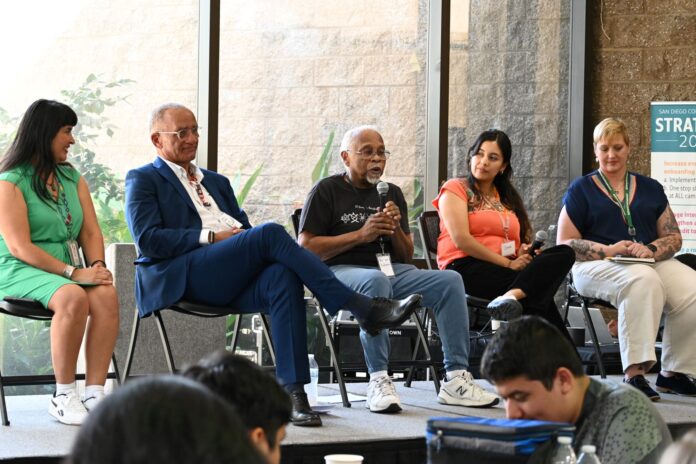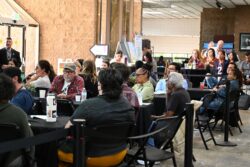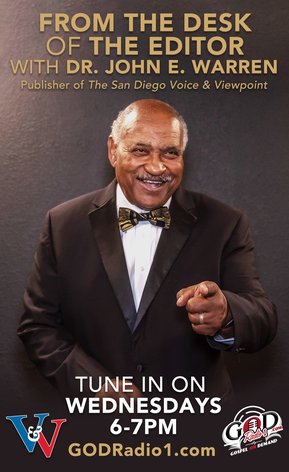
By Voice & Viewpoint Staff
The Community Connectors Conference took place on September 18th and 19th from 8-5pm to foster environmental justice and community healing in National City and Southeastern San Diego. The Green Corridor Project, in collaboration with key community partners including Mundo Gardens, The Urban Collaborative Project CDC, Smart Growth America, The Black Federation, The Vision Culture Foundation, CalTrans, SANDAG, The City of San Diego, the City of National City, and many more present contributed and collaborated on various elements of the conference, including breakout sessions that delve into storytelling, urban agriculture, Indigenous epistemology, and many keynote sessions that refocus the attention on the needs of the community.
“I came to San Diego in 1956 and there were no freeways,” said Vernon Sukumu, former President of the Black Federation and panelist of the Regional Environmental Justice Lens in the Community. Former US Navy Sailor, Sukumu was instrumental during the early days of integration in the military in the 50s in San Diego. Sukumu also went to college when he was 28 and graduated. That jumpstarted his passion for civil rights activism.
“I did not realize until after it happened, the need and intention for the connector and why. The 252 connector had made 280 homes that people lived in [unliveable] and made them sell the homes or took if from them for almost nothing,” added Sukumu.
Other panelists at the Community Connectors Conference are Janice Luna Reynoso, Executive Director of Mundo Gardens; Barry Pollard, Executive Director of the Urban Collaborative Project; Carmina Paz, Senior Program Manager of the Urban Collaborative Project; and Tracey D’Aoust Roberts, CalTrans Environmental Deputy District Director.
The panelists explored solutions for sustainable development, economic equity, and environmental justice in National City and Southeastern San Diego. They also expressed the need for the youth, the younger generation to get involved in these discussions to build a resilient and sustainable future they want to see. Their goal is to make National City and Southeastern San Diego a blue zone, where people have access to walkable communities and healthy foods that ends up having an impact on their health where they are able to live past 100.
“That’s something we’re trying to create in this new space. While we reclaim the land and address the needs of the community holistically. Looking at the walkability, the air quality, providing more housing that the community can own through community land trusts, and in return how can that improve the economic vitality of the community as well,” states Carmina Paz.
“We got to change the spirit. We got the same economic issue, we got the same demographics. And so it seems to me that over the last 10-15 years we have not joined forces. We deal with the racism, sexism, and all these issues. So the thought hit me, what if we joined forces? From a funding standpoint and get real money coming into this community to make an impact,” asserted Barry Pollard.

The audience, comprised of interested community residents, youth, community leaders, policymakers, and environmental advocates and activists eager to make a difference in there community, nodded and snapped in agreeance to the panelists’ strategies toward a more economical and sustainably healthy environment.
“If Linda Vista can do it so can San Ysidro, or City Heights and then we can create this bigger movement of planting more trees. Imagine the impact that can have. If we all work together to address issues in the supervisorial districts, imagine what we can do with the streets,” concluded Paz.


